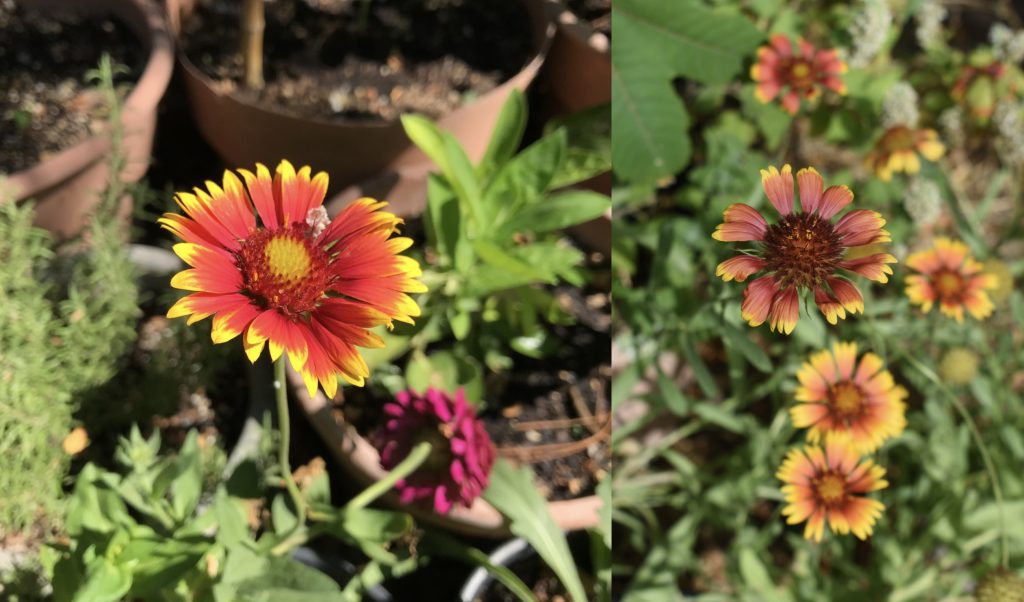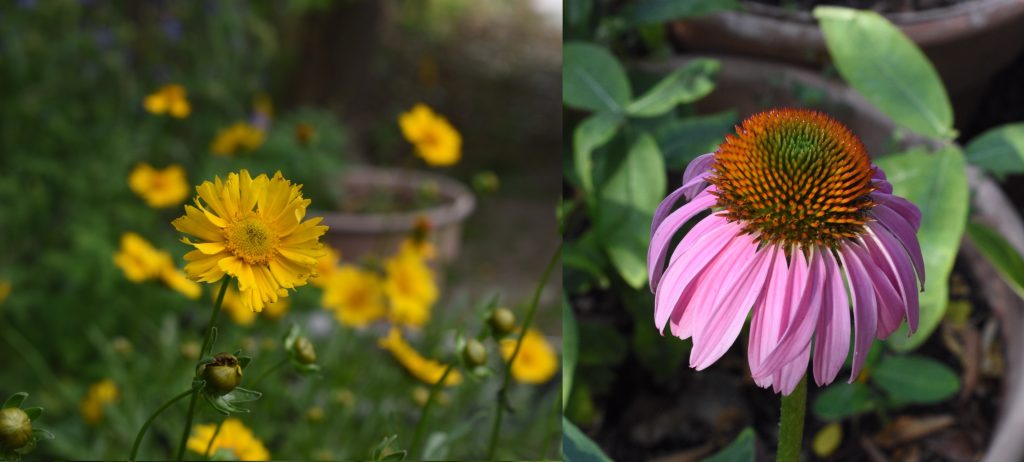I’ve got caterpillars in my garden. The eggs from the first wave of female monarch butterflies started hatching a couple days ago. They took longer to hatch than usual, probably because the weather was a cooler than average in the days after they were laid. Finding monarch eggs on milkweed is fairly hard because they are small and usually on the underside of a leaf. Finding monarch larvae (caterpillars) is much easier — just look for a hole in the leaf. When a caterpillar hatches, the first two things it does are eat the egg casing then chew a small hole in the leaf. It will then expand the hole a bit before crawling off to start feeding in another location. It may do so to prevent other insects from finding it easily and eating it.

A hole on top of a milkweed leaf (left) and the same hole and caterpillar under the leaf (middle). A second example of a monarch caterpillar next to a hole in a leaf.
Monarch larvae develop through five stages, called instars, before forming a chrysalis. The caterpillars in the photo above are first instar caterpillars. The caterpillars below have molted once and are second instar larvae. Each successive instar is larger than the previous one and its coloration pattern is different. First through fourth instar caterpillars are most often found under leaves. They eat nearly constantly, except then they stop to molt.
So far, I have set up two butterfly enclosures on my driveway, near my milkweed plants. When I capture a caterpillar, place it on a butterfly milkweed seedling and place the seedling in the enclosure. I have collected over 30 now. Once they have eating most of these seedlings, I will transfer them to larger host plants. (I will put the seedlings back in the sun and they should recover fairly quickly.) My quest to raise and release 240 monarchs is off to a fast start, but there is still a long way to go. I should have chrysalises in a little over a week.













Recent Comments